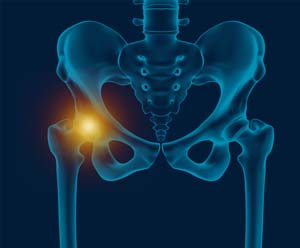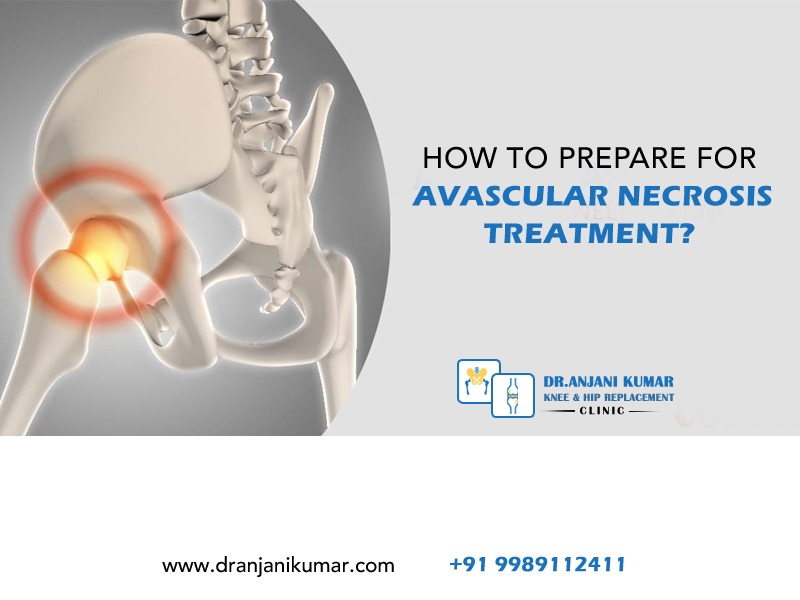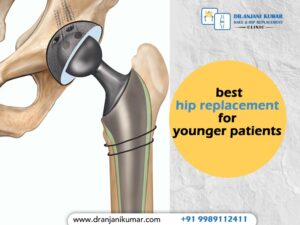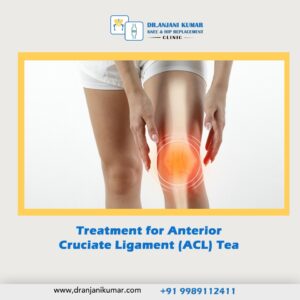People work while putting their health at risk, developing various health issues due to their efforts to achieve targets and goals. These days, no matter their age or gender, everyone is dealing with health problems. Only a small portion of health problems are treatable, and even fewer are irreversible.
Blood is necessary for supplying bone tissue with oxygen, nutrients, and waste removal. When the blood supply is harmed, the bone’s cells start to die, causing the affected area to crumble or lose its structural strength.
Although it can damage any bone in the body, avascular necrosis frequently affects the hip joint. The knee, shoulder, ankle, and wrist are some more typically impacted body parts. It can affect one or both sides of the body, and the condition’s severity can change.
Numerous variables can cause avascular necrosis. Typical causes include things like:
Trauma: A bone or joint injury can reduce blood supply, causing avascular necrosis.
Use of steroids: Using corticosteroids often or at high doses can raise the risk of avascular necrosis. Steroids might impact the body’s capacity to maintain healthy blood vessels.
Overindulgence of alcohol: Prolonged heavy drinking can weaken bones and disrupt blood flow, which raises the risk of avascular necrosis.
Medical conditions: Avascular necrosis risk can be increased by several medical disorders, including diabetes, lupus, HIV infection, and sickle cell anaemia.
Treatment preparation:

You must take many crucial actions to prepare physically, mentally, and logistically for avascular necrosis treatment.
Here are some broad pointers to assist you in getting ready:
Consult a medical expert: Make an appointment with a physician specialising in orthopaedics or avascular necrosis. They will assess your health, review your treatment options, and provide suggestions based on your circumstances.
Recognise the available therapies: Learn all you can about avascular necrosis therapy choices. With your healthcare provider, go over the advantages and disadvantages of each choice, including any potential risks, advantages, and anticipated results. This will enable you to choose your treatment strategy with knowledge.
Gather medical records: Collecting medical records Gather all pertinent medical information, such as imaging reports, X-rays, MRI scans, and any records of previous avascular necrosis treatment. Your healthcare physician will use this information to understand the condition’s evolution and inform therapy choices.
Follow any pre-treatment instructions: Your healthcare professional may give particular guidelines before the treatment. It can entail food limitations, medication modifications, or activity level restrictions. To maximise the effectiveness of the medication and reduce side effects, strictly follow the following directions.
Assistance plan: Having a support system in place may be beneficial, depending on the sort of therapy you will receive and the possibility of mobility restrictions following treatment. Share your treatment plan with your loved ones, friends, or carers and discuss any help you may require while recovering.
Prepare your home environment: If you expect to experience mobility issues after treatment, adjust your living environment. It can entail adding handrails, minimising trip hazards, rearranging furniture to make it easier to move about, or taking adaptive equipment like shower chairs or mobility aids into consideration.
Make a transport plan: Whether it’s a hospital, clinic, or rehabilitation facility, plan your route for getting to and from the treatment facility. Make arrangements for transportation support from a family member, friend, or taxi service if you cannot drive independently.
Make inquiries: Any queries or worries regarding avascular necrosis therapy, recovery, or long-term management should be written in writing. Making the most of your sessions and ensuring that you comprehend your illness and treatment plan are made possible by preparing these questions.
Remember that the preparations for avascular necrosis treatment may vary based on the chosen therapy technique and unique circumstances. Discussing your particular circumstances with your healthcare practitioner to get individualised advice and suggestions is crucial.
Those who have avascular necrosis:
Any age can be affected by avascular necrosis. However, some conditions can be more likely to occur in certain people.
The following demographics are among those who experience avascular necrosis more frequently:
Adults between 30 and 60: Avascular necrosis frequently affects adults between these two age ranges. Due to circumstances including traumatic traumas, steroid use, excessive alcohol use, or specific medical disorders, this age group frequently develops avascular necrosis.
Patients receiving long-term steroid therapy: Avascular necrosis is more likely to occur in people receiving long-term or high-dose corticosteroids. People may require corticosteroids to treat autoimmune diseases, including systemic lupus erythematosus or rheumatoid arthritis.
Patients with trauma or injuries: Traumatic injuries, such as fractures or dislocations, that cut off the blood supply to the injured bone can lead to avascular necrosis. Avascular necrosis is notably linked to fractures near joints, hip fractures, and dislocations.
Individuals with specific medical conditions: Avascular necrosis may be predisposed by specific underlying medical problems. These illnesses include Gaucher’s disease, systemic lupus erythematosus, HIV infection, sickle cell anaemia, and a few cancers. The specific ailment could reduce blood flow or make bone tissue more brittle.
Alcohol abusers: Prolonged and heavy alcohol use can weaken bones and impede blood flow, which raises the risk of avascular necrosis. The hip joint is frequently impacted by avascular necrosis brought on by alcohol.


Recipients of organ transplants: Patients who have received an organ transplant, particularly a kidney or bone marrow transplant, may be more susceptible to avascular necrosis. Immunosuppressive drugs to prevent organ rejection may be linked to this risk.
Note that people without any of these risk factors can nonetheless develop avascular necrosis. Avascular necrosis may occasionally have unknown or several causes, including a mix of environmental, genetic, and lifestyle variables.
The best course of action if you think you could have avascular necrosis or are worried about your risk, the best course of action is to speak with a healthcare provider who can assess your circumstances and offer suitable advice and care.
Treatment for avascular necrosis:
You must take several crucial actions to prepare physically, mentally, and logistically for avascular necrosis treatment.
Here are some broad pointers to assist you in getting ready:
Consult a medical expert: Make an appointment with a physician specialising in orthopaedics or avascular necrosis. They will assess your health, review your treatment options, and provide suggestions based on your circumstances.
Recognise your options for treatment: Learn all you can about avascular necrosis therapy choices. With your healthcare provider, go over the advantages and disadvantages of each choice, including any potential risks, advantages, and anticipated results. This will enable you to choose your treatment strategy with knowledge.
Gather medical records: Collecting medical records Gather all pertinent medical information, such as imaging reports, X-rays, MRI scans, and any records of previous avascular necrosis treatment. Your healthcare physician will use this information to understand the condition’s evolution and inform therapy choices.
Set up support: Having a support system in place may be beneficial, depending on the type of therapy you will have and the possibility of mobility restrictions afterwards. Tell your family, friends, or carers about your treatment plan and review any help you need while recovering.
Prepare your home environment: If you think you could have trouble getting around after treatment, make the required adjustments to your living environment. This could entail adding handrails, removing trip hazards, rearranging furniture to make it easier to move around, or thinking about adapting equipment like shower chairs or mobility aids.
Make a transport plan: Whether it’s a hospital, clinic, or rehabilitation facility, plan your route for getting to and from the treatment facility. Make arrangements for transportation support from a family member, friend, or taxi service if you cannot drive independently.
Address any personal or professional issues: If required, work with your employer to arrange a leave of absence for your treatment and rehabilitation. During this time, discuss any alterations or delegations that may need to be made to personal obligations or commitments.
Make inquiries: Any queries or worries regarding avascular necrosis therapy, recovery, or long-term management should be written in writing. Making the most of your sessions and ensuring that you comprehend your illness and treatment plan are made possible by preparing these questions.
Remember that the precise preparations for avascular necrosis treatment can change depending on the chosen treatment technique and the patient’s situation. Discussing your particular circumstances with your healthcare practitioner to get individualised advice and suggestions is crucial.
Causes and symptoms:
The degree of the ailment and the afflicted bone can impact the symptoms of avascular necrosis. However, there may not be any symptoms in the early stages.
The following signs and symptoms could appear as the condition worsens:
Pain: Avascular necrosis is most frequently characterised by pain in the afflicted joint, which may worsen with activity or weight-bearing. Discomfort can start mildly before escalating over time.
Joint stiffness: As avascular necrosis worsens, the affected joint may become stiff, which makes it challenging to move or carry out specific tasks.
Limited range of motion: Reduced range of motion in the afflicted joint may be experienced, making it challenging to carry out routine activities.
Joint instability: In the later stages of avascular necrosis, the afflicted joint may become shaky and give way or buckle under pressure.
Joint swelling: As the situation worsens or if there is subsequent inflammation, the affected joint may enlarge and become tender.
Avascular necrosis can have a variety of causes, some of which are still unidentified. Avascular necrosis.
Nonetheless, it is known to be influenced by several factors, such as:
Blood supply interruption: Avascular necrosis happens when a bone’s blood supply is cut off or diminished. Trauma, fractures, or joint dislocations that harm the blood arteries supplying the bone can all contribute to this.
Use of steroids: Using corticosteroids often or at high doses can raise the risk of avascular necrosis. Steroids can harm bone cells and disrupt the body’s capacity to maintain strong blood vessels.
Excessive alcohol consumption: An excessive amount of alcohol is consumed, which raises the risk of avascular necrosis by weakening bones and reducing blood flow.
Medical conditions: Avascular necrosis is more likely in people with specific medical conditions. These include Gaucher’s illness, systemic lupus erythematosus, sickle cell disease, and several cancers. These disorders may reduce blood flow or make the bone tissue more brittle.
Radiation therapy: Radiation therapy, whether recent or continuing, might harm blood vessels and raise the possibility of avascular necrosis in the treated area.
It’s crucial to remember that avascular necrosis can arise with no apparent explanation, and in other situations, the condition may be caused by a combination of several different factors.
It is advised to seek medical advice from a qualified individual for an accurate assessment and diagnosis if you encounter any symptoms that could indicate avascular necrosis or are worried about the condition of your bones.
Depending on the patient and the unique circumstances of their accident and treatment, ACL surgery can differ. Always consult your healthcare physician for specific advice on accelerating your ACL healing.
Knee replacement surgery may be recommended in advanced cases, especially if the joint has collapsed or the bone has become severely deformed.
Dr Anjani Kumar has 20 years of experience and successfully performed 2000 knee replacement surgeries, 350 hip replacement surgeries, and 500 pelvic acetabular surgeries throughout his career. Please get in touch with us on Mobile: at +91 9989112411 and by E-mail: anjanikumar@ gmail.com




